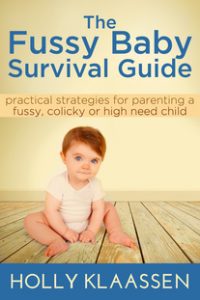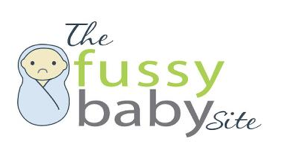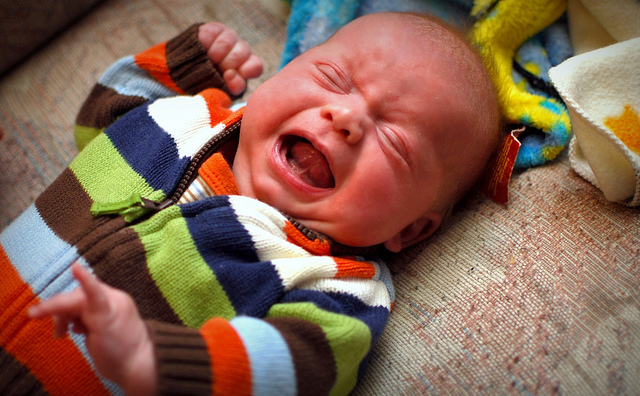Is My Baby Colicky or High Needs?
One of the tricky parts of running this site is constantly trying not to scare new parents into thinking their colicky baby is going to turn into a ‘high need’ baby!
If you’re new to the all day/all night crying, screaming, fussing, non-sleeping scene, all the terms you’ll read on this site (and others) can be confusing:
- Colic
- High need/high needs baby
- Difficult baby
- Active/Alert baby
- Spirited Child/high spirited baby
- Highly-sensitive baby
If you have a newborn who cries frequently and is just generally grumpy or discontent, it’s terrifying to think this could be more than “just” colic. This post will help you discern whether your newborn’s fussiness and crying is colic or temperament*.
What Does Colic Typically Look Like?
We know that colic usually starts at around 2-3 weeks of age (adjusted age for preemies), peaks at around 6 weeks, and is gone by 3-4 months of age (5 at the absolute longest).
With typical colic, you’ll see periods of contentment coupled with regular periods of crying, screaming and/or inconsolability. Typically (but not always), these periods of inconsolability will take place in the evening hours, sometimes lasting into the wee hours of the night.
Colicky infants may or may not also have feeding issues (reflux, fussy feeding, etc.) or food allergies/sensitivities (milk protein intolerance, sensitivity to caffeine, etc.). These other issues may exist alongside the colic, however they are not caused by the colic.
While we don’t know exactly what causes colic, there is good evidence that it’s a developmental stage, as newborns in all cultures and species that have been studied follow the same predictable ‘crying curve’ mentioned above: fussiness starting around 2-3 weeks, peaking at 6 weeks and ending at around 4 months. This theory is known as the Period of Purple Crying.
Crying in colicky infants does not appear to be caused by pain, and does not seem to be a result of parenting style. Ron Barr, researcher behind the Period of Purple Crying theory confirms this: “[T]he peak pattern is also present even in cultures in which parents do virtually everything that we know that is soothing. Perhaps the most detailed description of this is from the people known as the !Kung San hunter-gatherers of Botswana…The !Kung San carry their infants all the time, sleep side-by-side with them at night, feed them four times an hour on average, and respond to every fret and whimper within 10 seconds 90 per cent of the time. Nevertheless, they have the same increase and decrease in crying pattern that has been described elsewhere in the world.”
So if colicky babies aren’t in pain, why are they crying? Some experts have suggested that colic is caused by sensory overload, overstimulation or being overtired but unable to fall asleep. These theories make sense given that we typically see colicky crying at the end of the day.
What’s The Difference Between Colic and High Needs?
The good news about colic is that it always ends by 5 months at the absolute latest. Sometimes parents will tell me their 1 or 2 year old child is still colicky, however this isn’t actually possible (there is something else going on in this case).
If you have a newborn who is generally content, yet has periods of inconsolability, he or she most likely “just” has colic (if your doctor has ruled out a medical cause such as reflux or an allergy).
However, if your newborn is fussy most of the time, has troubles feeding, is very unpredictable in terms of sleep and other routines, and is very intense in his reactions, there’s a good chance he is high need. By ‘high need’, I mean he has a sensitive temperament, and exhibits many of the high need traits as outlined by Dr. Sears.
While sometimes we see infants who exhibit these traits because of a medical condition, usually once the underlying issue is resolved (via a low-allergen diet, hypoallergenic formula, reflux meds, etc.), the baby will stop exhibiting these behaviours.
In my experience, many babies are high need because of temperament, however are being treated for other issues (allergy, reflux, etc.). It’s my personal and non-medical (!) opinion that the reason we often need to treat high need babies for these conditions is because they react so strongly to what other babies might not (for instance, while a more laid-back baby may fuss a bit because of reflux, a high need baby will wail and scream for hours).
How Can I Tell If My Baby is Colicky or High Need?
Keep in mind I’m not a physician. Any infant who cries or fusses excessively should be checked over by a doctor to ensure there are no underlying issues.
That said, there are some commonalities I’ve seen over the past 8 years that seem to indicate your infant is more likely high need than colicky:
- The fussiness often starts right at birth; colic tends to start at 2-3 weeks old. Parents will say they noticed something different about their baby right from the start.
- High need infants tend to cry, fuss, have sleeping issues day and night; colicky babies tend to have periods of inconsolability but also periods of relative contentment.
- Sometimes (certainly not always) high need babies will remain calm as long as they’re being held; colicky babies are often inconsolable during their crying bouts.
If My Baby is High Need, Will She Always Be This Way?
If you currently have a high need newborn, there’s a good chance you’re living through the hardest period of time right now. Once he or she gets a bit bigger, the all-day/all-night crying will ease off. Parents will often report that their high need baby has a BIG personality; his presence lights up a room. The flip side, of course, is that when he’s unhappy, he’ll get everyone know, long and loud.
High need babies need lots of love, attention and flexibility, but as they get more independent, they become the most wonderful and bright little kids. Go easy on yourself and know that all the hard work you’re putting in now will pay off in the not-too-distant future.
For more on the different between colic, high need and the spirited temperament, see my post Ages and Stages of the Fussy Baby.
*As alway, please do not rely on this (or any other online source) for medical advice. Infants with excessive crying or fussiness should always be seen by a physician to rule out an underlying medical cause.
 Need more info and support to help you survive (and thrive) with your high need child?
Need more info and support to help you survive (and thrive) with your high need child?
If you’re looking for practical strategies for parenting a fussy, colicky or high need baby, or just reassurance that what you’re going through is normal, you might be interested in my new ebook, The Fussy Baby Survival Guide.
Other Posts You May Like
How to Raise a Dragon Baby
A Possible Treatment Or Cure For Colic?
Is My Baby Colicky or High Needs?
Rare Causes of Infant Fussiness
Does H. Pylori Bacteria Cause Colic?
The 9 Causes of Colic, Fussiness, High Need Behaviour and the Spirited Temperament

